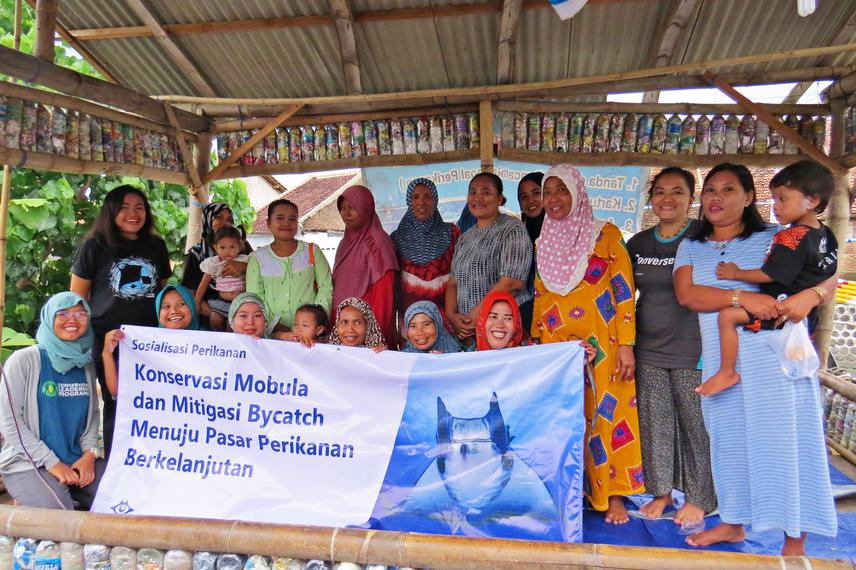Vidlia Putri Rosady
Our project will evaluate the technical, social and economic feasibility of using light-emitting fishing gear modifications to reduce mobula ray bycatch. Mobula rays are vulnerable to extinction, and Indonesia’s small-scale drifting gillnet fisheries are a significant contributor to global bycatch. We will evaluate the impact of gear modifications on bycatch and target species landings via a Randomised Control Trial. We will also increase awareness of community and government stakeholders about: (i) mobula ray conservation and regulatory status; (ii) sustainable seafood markets; and (iii) bycatch reduction technologies. Our project will contribute to emerging national efforts to improve shark and ray conservation management in Indonesia.

Mobula ray fisheries are largely unregulated and unreported. Global landings increased by an order of magnitude from 1998-2009. Bycatch is a major component, and Indonesia’s small-scale drifting gillnet fisheries a significant contributor. Despite mobulids attracting international conservation (e.g., CMS 2014, CITES 2016), efforts to date have focused primarily on target fisheries and illegal wildlife trade.
Light is a widely-used lure in capture fisheries, and has also been successfully used to reduce interactions with non-target species including salmon and Right Whales. Responses to light have been recorded for sharks, and emerging research suggests that rays may also respond to coloured light. Light may have potential to reduce bycatch of mobula rays.
Our project aims to reduce incidental bycatch of mobulid rays within small scale fisheries. Small-scale fisheries account for 90% of Indonesia’s 2.7 million fishers but are undermanaged. While bycatch reduction is a priority objective of a National Plan of Action for Sharks and Rays, this plan does not specifically address small-scale fisheries.
Through this project, we aim to identify tools and approaches that are suitable for bycatch reduction within Indonesia’s small-scale fisheries. We will increase awareness of fishing communities about these tools and the requirements of sustainable seafood markets, which have the potential to create the incentives to scale successful approaches.
Importantly, we also aim to increase the capacity of national decision-makers and stakeholders to reduce bycatch within small-scale fisheries. This project will establish a model that demonstrates how objectives outlined in a National Plan of Action for Sharks and Rays could be achieved within small-scale fisheries. We hope that the project’s findings will inform government support programs, such as the granting and distribution of gillnets to fishing communities nationwide, to ensure that these gears incorporate bycatch reduction designs.